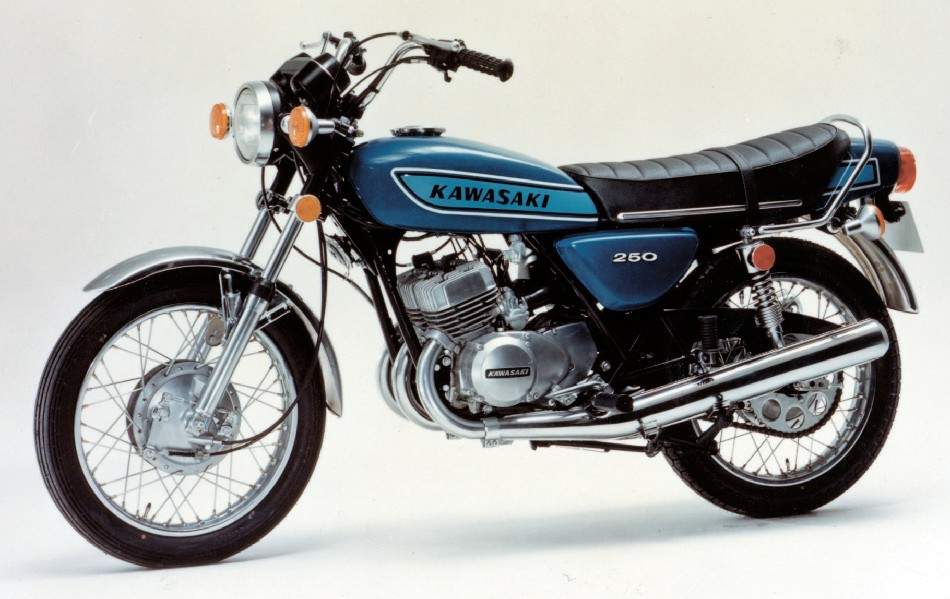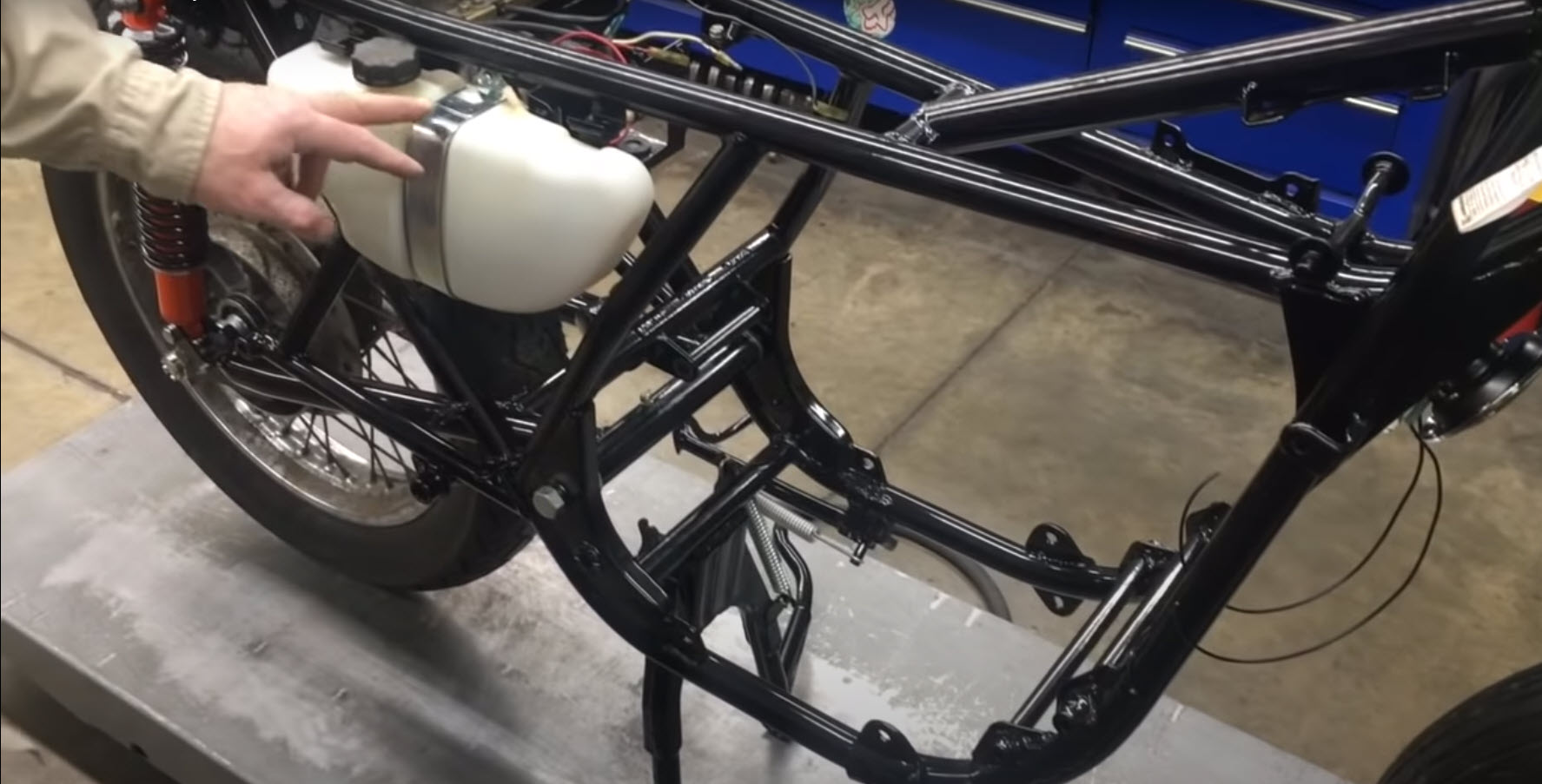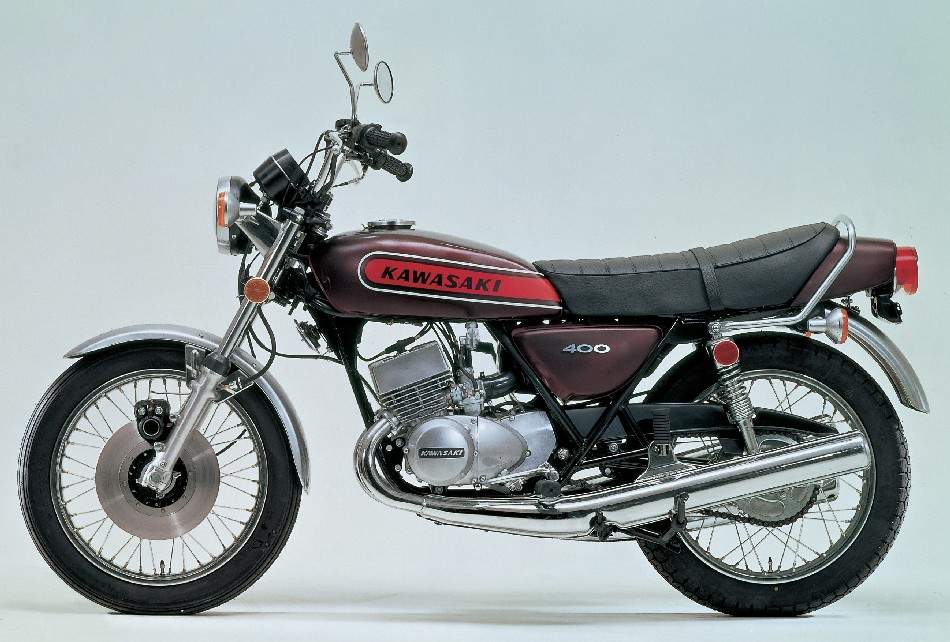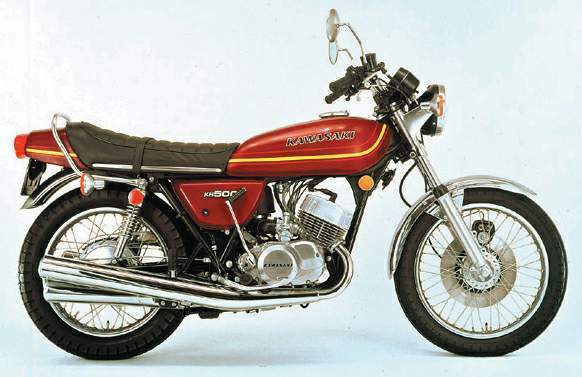The first half of the 1971 S Series came as Kawasaki’s response to the customers’ change of tastes and needs. Something slightly different from their earlier two-stroke twin bikes, A1-250 and A7-350.
1971/1972 S1-250
This model was offered in Pearl White and Red, with the stripe design derivative from the H2-750, though the red sample was only available in a few countries. During the manufacturing process, the bike required a 32bhp to be applied to it.
In the UK, it was a permitted beginner model nicknamed “The White Swan”.
The execution of this bike was rather remarkable, especially at the hands of an inexpert rider. It was a bike of a quite easy handling, or at least as easy as one of the Kawasaki Triples could be. The media often joked that the owners needed only around “six brain cells” to ride it properly. The quality and finish were stunning and never surpassed by the other 250’s models in the years to come, besides the near 100mph top haste were perfectly adequate and the twin leading front brake pedal was alright if established properly but pretty impractical if not.
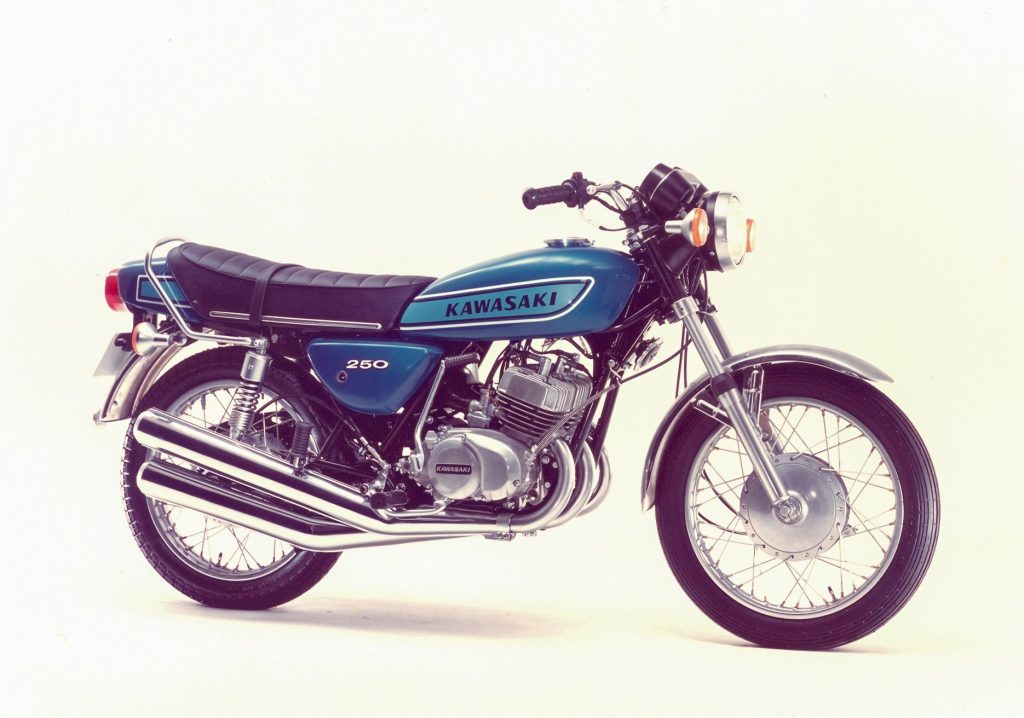
1973 S1-A
There were quite a few upgrades performed to the 1973 sample, as well as modifications such as the reduction in power to 28bhp. The previous S1 was outlined as a decreased version of the S2-350, this one was styled as a 250 using diverse porting, jetting, and various silencers. The “KH” type of chronometers was employed for the first time and the framework was restructured to some extent, the front fire screen was chromed instead of painted, the seat was smaller, and the top speed was also reduced to 90mph.
The entire product was presented in three color options: gold, blue, and orange.
1974 S1-B
The frame went through yet another makeover, this time in favor of a much more rounded design and it came in only one color: candy green with a lighter green stripe on the tank. This was the outline utilized for the 400-S3 and 750 H2-B as well. D
The resistance curb from prior prototypes was excluded, the chair was reformed anew, the back shockwaves were adapted to provide a firmer drive – though, this proved to not be all customer’s preference. Also, the gasoline cover from the Z1 was fitted into this sample, and the adjustment cog was altered to permit the plug lever to be fixed to the left-hand piece.
1975 S1-C
The 1975 sample enjoyed fair popularity for it was launched to the public at a time of great bike demand. It was obtainable in one color: Halibut Blue with a sticky label put on to the end fairing; but there were little changes aside from it. The contours of the labels on the tank were transformed into a more pointed pattern and the lateral panel insignias were shifted from chrome pieces to white.
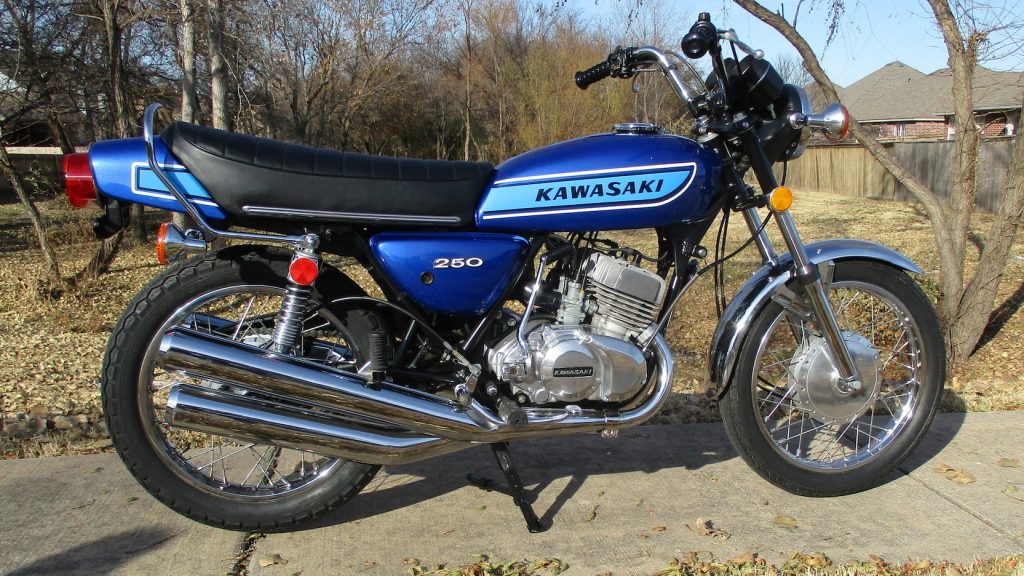
1971/1972 S2
The first S2 prototype was very akin to the bigger H2-750 in matters of appearance, with the same framework and marker pattern. It was sold under names such as 350-SS and 350 MACH II, and it came only in Pearl Candy Red, yet some markets obtained it in the Pearl White applied on the S1-250.
Unlike its antecessors, it was not known for its easy handling or its performance, but its fuel consumption instead. It counted with varied popularity due to the lack of sales in the UK for the 250 cc learner law, but the American public received it with open arms. Its real capacity was 346 cc – hence the surpassing of the 250 cc rule in the United Kingdom – and the company stated it possessed top haste of 112mph with an S/S of 13.6 seconds for its reasonably light mass.
The refit quality of the S2 is the one to thank for Kawasaki’s reputation for fast, classy motorcycles remaining up to the present day.
1973 S2-A
For the second S2 model, Kawasaki repeated the same formula than with the S1 samples. The skeleton was exchangeable and presented in the preceding three colors: orange, gold, and blue – the latter which was the most demanded one.
On the other hand, the front fire screen on the S2 was a chrome silver-plated piece. The main dissimilarity from the S1 was the use of a disk brake pedal at the front – a much-appreciated adjustment for it turned the S2 into a much better, securer bike than its predecessors.
1974/1977 S3-400 and KH400
In 1974 the company substituted the programmed 350 S2 with a more slow-moving 400 version, the S3. Power was settled down to a 42bhp but Kawasaki endorsed this modification declaring that – despite the decrease of power – the S3 was a much pleasanter bike to ride.
Admittedly it wasn’t a very smart commercial move since the customers didn’t look for triple bikes to be “pleasant”.

